
Joliet Correctional Center was a prison in Joliet, Illinois, United States, from 1858 to 2002. It is featured in the motion picture The Blues Brothers as the prison from which Jake Blues is released at the beginning of the movie. It is also used for the exterior shots of the Illinois "state prison" in the James Cagney film White Heat, and the location for first season of Fox Network's Prison Break television show, and the movie Let's Go to Prison. In 2018, it opened for tours.

The Wyoming Department of Corrections (WDOC) is a state agency of Wyoming that operates adult correctional facilities. It is headquartered in Suite 100 of the 1934 Wyott Drive building in Cheyenne.

The Eastern State Penitentiary (ESP) is a former American prison in Philadelphia, Pennsylvania. It is located in the Fairmount section of the city, and was operational from 1829 until 1971. The penitentiary refined the revolutionary system of separate incarceration first pioneered at the Walnut Street Jail which emphasized principles of reform rather than punishment.

The United States Penitentiary, Leavenworth is a medium security U.S. penitentiary in northeast Kansas. It is operated by the Federal Bureau of Prisons, a division of the United States Department of Justice. It also includes a satellite federal prison camp (FPC) for minimum-security male offenders.
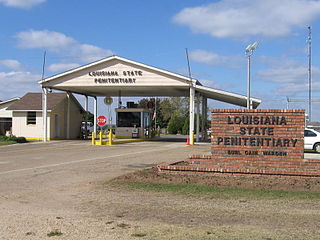
The Louisiana State Penitentiary is a maximum-security prison farm in Louisiana operated by the Louisiana Department of Public Safety & Corrections. It is named "Angola" after the former slave plantation that occupied this territory. The plantation was named after the country of Angola from which many slaves originated before arriving in Louisiana.

The Wyoming State Capitol is located in the city of Cheyenne. Cheyenne is the seat of government for the U.S. state of Wyoming. Built between 1886 and 1890, the capitol is located in Cheyenne and contains the chambers of the Wyoming State Legislature as well as the office of the Governor of Wyoming. It was designated a U.S. National Historic Landmark in 1987. The Capitol underwent an extensive three-year renovation and reopened to the public on July 10, 2019.

A super-maximum security (supermax) or administrative maximum (ADX) prison is a "control-unit" prison, or a unit within prisons, which represents the most secure level of custody in the prison systems of certain countries.

The State Correctional Institution – Graterford, commonly referred to as SCI Graterford, known prior as Eastern Correctional Institution, Graterford Prison, Graterford Penitentiary, and the Graterford Prison Farm, was a Pennsylvania Department of Corrections prison located in Skippack Township, Montgomery County, Pennsylvania, near Graterford. The prison, located on Graterford Road off of Pennsylvania Route 29, was about 31 miles (50 km) northwest of Philadelphia.
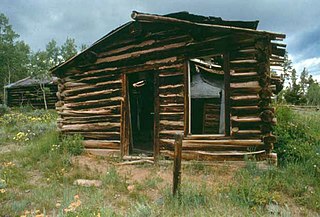
Hamilton City, or Miner's Delight as it was commonly known, was a town in Fremont County, Wyoming, United States, on the southeastern tip of the Wind River Range, that prospered during the mining boom in the American West in the second half of the 19th century. It was a "sister city" of Atlantic City and South Pass City. Today a few buildings still stand as a reminder of an era in Wyoming's past history.
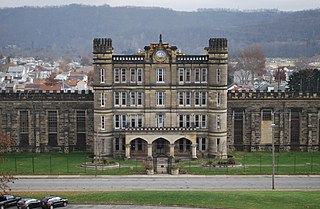
The West Virginia Penitentiary is a gothic-style prison located in Moundsville, West Virginia. Now withdrawn and retired from prison use, it operated from 1866 to 1995. Currently, the site is maintained as a tourist attraction, museum, training facility, and filming location.

The Old Idaho Penitentiary State Historic Site was a functional prison from 1872 to 1973 in the western United States, east of Boise, Idaho. The first building, also known as the Territorial Prison, was constructed in the Territory of Idaho in 1870; the territory was seven years old when the prison was built, a full two decades before statehood.

The Ohio Penitentiary, also known as the Ohio State Penitentiary, was a prison operated from 1834 to 1984 in downtown Columbus, Ohio, in what is now known as the Arena District. The state had built a small prison in Columbus in 1813, but as the state's population grew the earlier facility was not able to handle the number of prisoners sent to it by the courts. When the penitentiary first opened in 1834, not all of the buildings were completed. The prison housed 5,235 prisoners at its peak in 1955. Prison conditions were described as "primitive" and the facility was eventually replaced by the Southern Ohio Correctional Facility, a maximum security facility in Lucasville. During its operation, it housed several well-known inmates, including General John H. Morgan, George "Bugs" Moran, O. Henry, Chester Himes, and Sam Sheppard. A separate women's prison was built within its walls in 1837. The buildings were demolished in 1997.

Michigan State Prison or Jackson State Prison, which opened in 1839, was the first prison in Michigan. After 150 years, the prison was divided, starting in 1988, into four distinct prisons, still in Jackson: the Parnall Correctional Facility which is a minimum-security prison; the G. Robert Cotton Correctional Facility where prisoners can finish their general education; the Charles Egeler Reception and Guidance Center which is the common point of processing for all male state prisoners sentenced to any Michigan prison; and the Cooper Street Correctional Facility which is the common point for processing of all male state prisoners about to discharge, parole, or enter a community center or the camp program.

The Montana State Prison is a men's correctional facility of the Montana Department of Corrections in unincorporated Powell County, Montana, about 3.5 miles (5.6 km) west of Deer Lodge. The current facility was constructed between 1974 and 1979 in response to the continued degeneration of the original facility located in downtown Deer Lodge.
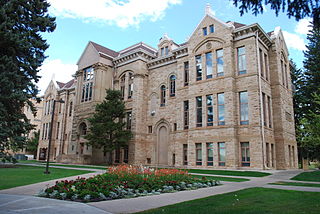
Old Main, built 138 years ago in 1886 in Laramie, Wyoming, was the first building on the University of Wyoming campus and continues as its oldest. At an approximate elevation of 7,180 feet (2,190 m) above sea level, it currently houses university administration.
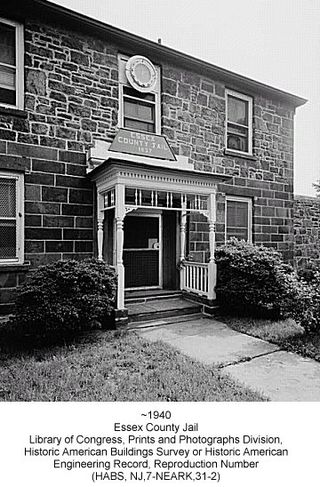
The old Essex County Jail is located in the University Heights section of Newark, Essex County, New Jersey, United States. The jail is Essex County's oldest public building and a national landmark of value for its architectural and social history. The complex consists of about 20 structures of various size, age, and function ranging in date from the 1830s to 1930s. Collectively, they represent the evolution of American prison history over 100 years. For the quality of its architecture, its social history, and its links to the 1967 Newark Riots, this jail was added to the National Register of Historic Places on September 3, 1991.
Colorado State Penitentiary is a Level V maximum security prison in the U.S. state of Colorado. The facility is part of the state's East Cañon Complex, together with six other state correctional facilities of various security levels.

United States Penitentiary, Alcatraz Island, also known simply as Alcatraz or The Rock, was a maximum security federal prison on Alcatraz Island, 1.25 miles (2.01 km) off the coast of San Francisco, California, United States. The site of a fort since the 1850s, the main prison building was built in 1910–12 as a U.S. Army military prison.
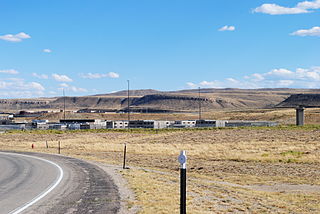
The Wyoming State Penitentiary is a historic and current prison in Rawlins, Carbon County, Wyoming, which has operated from 1901. It moved within Rawlins to a new location in 1981. In 2018, it is a Wyoming Department of Corrections state maximum-security prison for men.

The South Carolina Penitentiary was the state of South Carolina's first prison. Completed in 1867, the South Carolina Penitentiary served as the primary state prison for nearly 130 years until its demolition in 1999. It was located adjacent to the Congaree River in Columbia, South Carolina and was added to the National Register of Historic Places on January 4, 1996. It was replaced by the Lee Correctional Institution as the main prison in the state of South Carolina after the prison was deemed too overcrowded by a federal court.





















